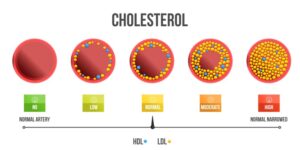DME: All the Basics You Need to Know

Diabetic macular edema (DME) is a complication of diabetes that causes swelling and fluid buildup in the macula of the eye. The macula is responsible for the sharp central vision needed for activities like reading and driving. When it swells from DME, vision blurs. Every person with diabetes must keep the following in mind to protect their vision.
What Causes DME?
The macula contains millions of small blood vessels that can be damaged by high blood sugar. This damage causes leaks and fluid buildup called edema. DME typically develops in those who have diabetic retinopathy, another diabetes complication affecting blood vessels in the retina. The longer you have diabetes, the more at risk you are for DME. If you suspect you have macular edema, you need to get help with your DME right away.
Symptoms of DME
Blurry central vision is the main symptom of this condition. You may have trouble reading small print or seeing details. Colors often appear washed out or faded, and symptoms can vary between the two eyes. Subtle DME can cause mild vision loss while advanced cases lead to more significant blurriness.
Getting an Eye Exam
All people with diabetes need a comprehensive dilated eye exam annually to catch DME early before permanent vision loss occurs. The pupil-dilating drops used in the exam allow the eye doctor to view the back of your eye and evaluate macular health. Early intervention is key with DME.
Diagnosing DME
If DME is suspected, optical coherence tomography (OCT) imaging is done to confirm fluid in the macula. This noninvasive scan uses light waves to get a cross-section view of the retina, revealing edema. The test is painless and quick. Your eye doctor will also examine the retina for signs of leaking blood vessels and do a vision test to measure the level of blurriness.
Treatment Options
Several options exist to treat DME. Your eye doctor may prescribe eye drops to help reduce swelling and fluid, while laser surgery can seal leaking blood vessels. Eye injections of medication can also curb swelling and prevent further vision loss. If DME is caught early, these treatments are very effective at halting progression.
Role of Blood Sugar Control
Getting blood sugar levels down through diet, exercise, medication, and insulin helps prevent and manage DME. Work closely with your primary care doctor to control diabetes properly and adhere to your treatment plan. Blood sugar control gives DME treatment the best chance of preserving vision.
Ongoing Monitoring
Expect close monitoring from the initial DME diagnosis onward. Your eye doctor will check for changes in fluid levels, swelling, and vision every few months. Additional treatment can be administered as needed based on exam findings. Consistency with follow-up exams and blood sugar management is vital.
Living with DME
Adaptations like using magnifiers, brighter lighting, and audiobooks can help you cope with vision changes from DME. Support groups connect people facing similar diabetes complications, and a healthy lifestyle helps control progression. With close monitoring and proper care, many people with DME can maintain functional vision and adapt to vision changes as needed.
Knowing the signs, symptoms, and treatment process of DME allows for the best outcomes with this diabetic eye complication. By controlling blood sugar and getting prompt treatment when DME is found early, permanent vision loss can be minimized. Work closely with both your primary care doctor and eye doctor to stay on top of your eye health.









